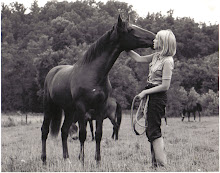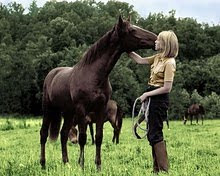

I had a bunch of leftover egg whites in the fridge.
Just waiting...
Calling out to me...
Previously, I'd used up the yolks for:

... some Hollandaise sauce for my Bacon Benedicts - buttered toasts from my homemade loaf, a bed of steamed spinach, baked-in-the-oven-crisp bacon, and a two-minute-and-twenty-second poached egg...
AND... some of the best vanilla ice cream I've ever made...
...which I served with Mr. Hawthorne's birthday cake...
which was three tiers of chocolate, chocolate, and more chocolate with a coconut German chocolate filling.
And here's the ice cream in the ice cream maker.
And here's some of Mr. H's birthday cake swimming in a pond of the vanilla ice cream.Where was I?
Oh yes. Leftover egg whites.
It took me a few days of mulling over what to do with the whites, and then it hit me.
And oh boy, was it ever good.
Ethereal and cloud-like come to mind.

I'm making a Pavlova Pineapple Roll-Up.
"Rosie, what is Pavlova," you ask?
Pavlova is a meringue-based dessert, typically served with whipped cream and fruit, named in honor of Russian prima ballerina, Anna Pavlova. Both Australia and New Zealand lay claim to the creation of the Pavlova and they've been squabbling over it since 1926 when the ballerina toured both countries. Of course, if you want to muddy the waters, there were Pavlova-like recipes popping up in America and Germany well before Pavlova ever put on her tutu. At any rate, this meringue creation is as light and airy as Pavlova's tutu. And whomever invented the Pavolova, I thank you.
Pavlova was most famous for her role as the Dying Swan, choreographed to Camille Saint-Saëns's Le Cygne from Le Carnaval des animaux, a solo dance she performed over 4000 times. Pavlova, inspired by Alfred Lord Tennyson's poem, The Dying Swan, and also by swans she had seen in parks, created the dance which interprets the last moments in the life of a swan. See here for Pavlova's performance. Pavlova succumbed to pneumonia at the age of 50 and was reported to have cried out, moments before her death, "Bring me my swan costume!" Oh... Would that I could come up with a line like that on my deathbed!

My Pavlova consists of a baked meringue base with a cream cheese and pineapple filling spread on top, rolled up, jelly-roll style, and then adorned with fruits. No frosting necessary.
Before I begin, let's talk about meringue.
Meringue is a mixture of egg whites and sugar, along with an acidic component to help stabilize the whole affair, well beaten until a silky smooth shape-holding state is formed. The meringue is then baked.
Do not be intimidated by meringue. Mastering meringue is not hard, but there are a few tips and techniques to help you make a successful meringue.
1) Do not attempt meringue on a humid day. The whites will absorb the moisture from the air and will not achieve a stiff state when beaten. Wait for a dry day.
2) Do not allow any water or egg yolk to come in contact with the whites. Not even a drop! Any fat coming in contact with the whites will prevent them from foaming.
3) Use a perfectly clean bowl in which to beat the whites. A plastic bowl, no matter how clean, will generally retain a grease film. Use a glass or stainless steel bowl.
4) For maximum volume, have whites at room temperature.
5) Use a stabilizer. A stabilizer could be cream of tartar, cornstarch, lemon juice, or vinegar - some type of acid. Introducing an acid into the mix encourages the proteins in the egg whites to bond together, thus creating more air bubbles and foam and fluff. Using a copper bowl is preferred by many chefs because the chemical reaction between copper and egg whites produces a more stable, high-rise foam. Copper contains an ion which reacts with a protein in the egg white (namely conalbumin) which helps to create a more stable foam.
6) Use the whisk attachment, not the beater. A whisk incorporates more air into your foam than a beater does.
7) Add the sugar at the end of beating, not at the beginning. Adding the sugar at the beginning interferes with the egg proteins achieving proper bonds and foaming. Sugar also contributes to structural integrity. In addition to providing flavor, sugar acts like a glue that holds the foam together.
Now, let's make a jelly-roll Pavlova.

For the pineapple filling:
8 oz. cream cheese, softened
1/4 cup heavy cream
1 tsp vanilla
1/2 cup crushed pineapple
Mix all together.
For the Pavlova meringue roll:
3/4 cup egg whites (4 whites maybe)
1 1/3 cups sugar
2 tsp cornstarch
2 tsp distilled white vinegar
1 tsp vanilla
Using a hand-held mixer or, preferably, a tabletop mixer, whisk egg whites for about 3 minutes until soft peaks foam. Gradually add in sugar, continuously whisking on medium-high speed until thick and glossy. Whisk in cornstarch, vinegar, and vanilla.
Spray a large baking pan (10 x 15-inch) with cooking spray, then line with parchment paper.
Spread meringue evenly over paper and bake in a 325° oven for about 20-23 minutes, until just firm on top. If too hard and crusty, you won't be able to roll the meringue. Let cool in pan for two or three minutes.
Place a kitchen towel on the countertop and cover with parchment paper. Generously sprinkle parchment with powdered sugar.
Turn meringue onto parchment paper.
Evenly spread filling onto the meringue. Using the parchment paper to guide, gently roll up the Pavlova.
Place on a tray and refrigerate until filling is set, about 3 hours.
To serve, slice and sprinkle more powdered sugar and add some berries.
For the step-by-steps:
"Rosie, what is Pavlova," you ask?
Pavlova is a meringue-based dessert, typically served with whipped cream and fruit, named in honor of Russian prima ballerina, Anna Pavlova. Both Australia and New Zealand lay claim to the creation of the Pavlova and they've been squabbling over it since 1926 when the ballerina toured both countries. Of course, if you want to muddy the waters, there were Pavlova-like recipes popping up in America and Germany well before Pavlova ever put on her tutu. At any rate, this meringue creation is as light and airy as Pavlova's tutu. And whomever invented the Pavolova, I thank you.
Pavlova was most famous for her role as the Dying Swan, choreographed to Camille Saint-Saëns's Le Cygne from Le Carnaval des animaux, a solo dance she performed over 4000 times. Pavlova, inspired by Alfred Lord Tennyson's poem, The Dying Swan, and also by swans she had seen in parks, created the dance which interprets the last moments in the life of a swan. See here for Pavlova's performance. Pavlova succumbed to pneumonia at the age of 50 and was reported to have cried out, moments before her death, "Bring me my swan costume!" Oh... Would that I could come up with a line like that on my deathbed!

My Pavlova consists of a baked meringue base with a cream cheese and pineapple filling spread on top, rolled up, jelly-roll style, and then adorned with fruits. No frosting necessary.
Before I begin, let's talk about meringue.
Meringue is a mixture of egg whites and sugar, along with an acidic component to help stabilize the whole affair, well beaten until a silky smooth shape-holding state is formed. The meringue is then baked.
Do not be intimidated by meringue. Mastering meringue is not hard, but there are a few tips and techniques to help you make a successful meringue.
1) Do not attempt meringue on a humid day. The whites will absorb the moisture from the air and will not achieve a stiff state when beaten. Wait for a dry day.
2) Do not allow any water or egg yolk to come in contact with the whites. Not even a drop! Any fat coming in contact with the whites will prevent them from foaming.
3) Use a perfectly clean bowl in which to beat the whites. A plastic bowl, no matter how clean, will generally retain a grease film. Use a glass or stainless steel bowl.
4) For maximum volume, have whites at room temperature.
5) Use a stabilizer. A stabilizer could be cream of tartar, cornstarch, lemon juice, or vinegar - some type of acid. Introducing an acid into the mix encourages the proteins in the egg whites to bond together, thus creating more air bubbles and foam and fluff. Using a copper bowl is preferred by many chefs because the chemical reaction between copper and egg whites produces a more stable, high-rise foam. Copper contains an ion which reacts with a protein in the egg white (namely conalbumin) which helps to create a more stable foam.
6) Use the whisk attachment, not the beater. A whisk incorporates more air into your foam than a beater does.
7) Add the sugar at the end of beating, not at the beginning. Adding the sugar at the beginning interferes with the egg proteins achieving proper bonds and foaming. Sugar also contributes to structural integrity. In addition to providing flavor, sugar acts like a glue that holds the foam together.
Now, let's make a jelly-roll Pavlova.

For the pineapple filling:
8 oz. cream cheese, softened
1/4 cup heavy cream
1 tsp vanilla
1/2 cup crushed pineapple
Mix all together.
For the Pavlova meringue roll:
3/4 cup egg whites (4 whites maybe)
1 1/3 cups sugar
2 tsp cornstarch
2 tsp distilled white vinegar
1 tsp vanilla
Using a hand-held mixer or, preferably, a tabletop mixer, whisk egg whites for about 3 minutes until soft peaks foam. Gradually add in sugar, continuously whisking on medium-high speed until thick and glossy. Whisk in cornstarch, vinegar, and vanilla.
Spray a large baking pan (10 x 15-inch) with cooking spray, then line with parchment paper.
Spread meringue evenly over paper and bake in a 325° oven for about 20-23 minutes, until just firm on top. If too hard and crusty, you won't be able to roll the meringue. Let cool in pan for two or three minutes.
Place a kitchen towel on the countertop and cover with parchment paper. Generously sprinkle parchment with powdered sugar.
Turn meringue onto parchment paper.
Evenly spread filling onto the meringue. Using the parchment paper to guide, gently roll up the Pavlova.
Place on a tray and refrigerate until filling is set, about 3 hours.
To serve, slice and sprinkle more powdered sugar and add some berries.
For the step-by-steps:
You want to whisk the whites into glossy, stiff peaks.
Evenly spread the whites out onto the parchment-lined baking sheet.
Bake until lightly set.
Pour the prepared filling over the meringue.
And start spreading...
From edge to edge... Evenly.
Using the parchment and a bench scraper, gently roll up the merinque.
Like this. And place on serving dish. Sprinkle some powdered sugar over top.
Now, refrigerate it.
This is one of the best desserts I've ever tasted.
Seriously.
It melts in your mouth.
It makes my mouth deliriously happy.
Seriously.
It melts in your mouth.
It makes my mouth deliriously happy.
You could add any fruits you like.
And amazingly wonderful.
Do yourself a favor and make this.

Bring me my Pavlova!!!






































































